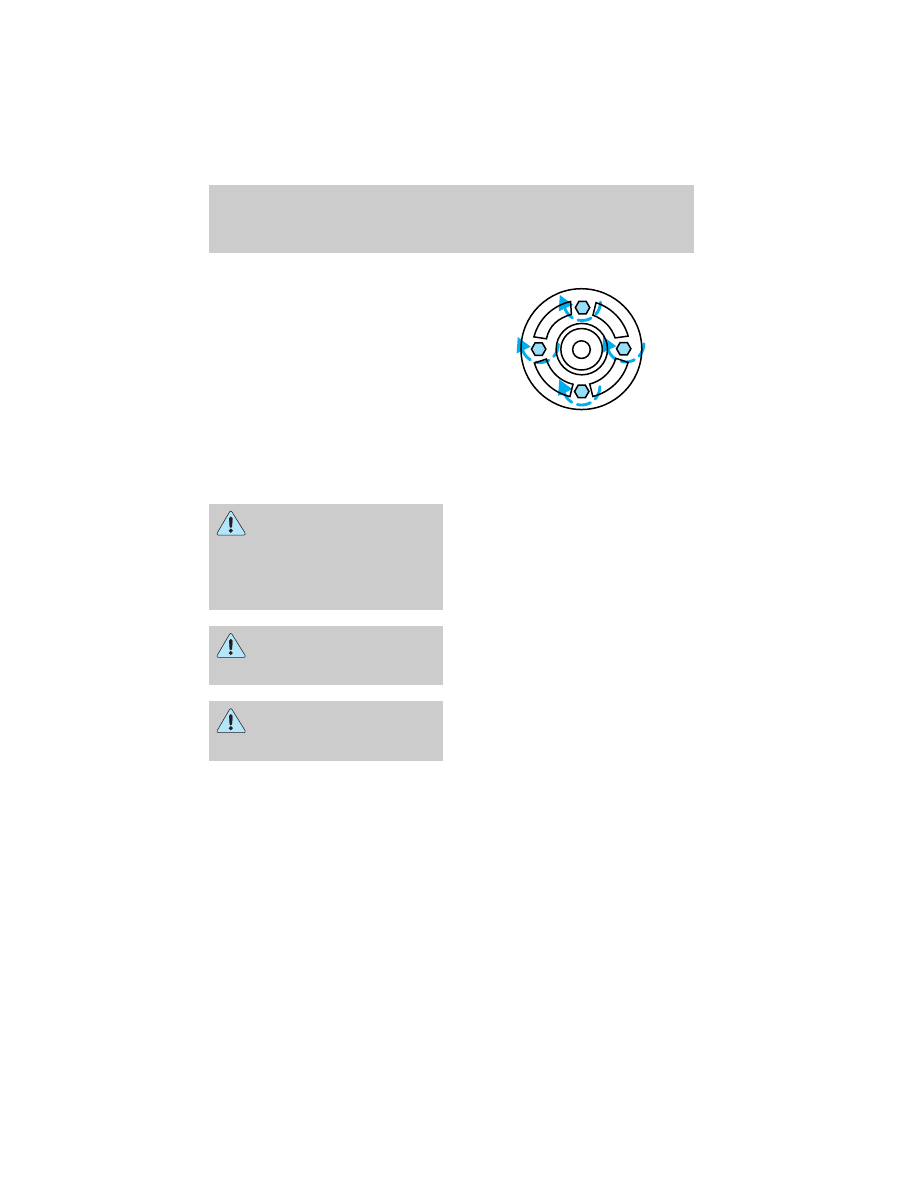Mercury Tracer (1998 year). Manual - part 8

9. Remove the jack and fully
tighten the lug nuts in the order
shown.
10. Put flat tire, jack and lug
wrench away. Make sure the jack is
fastened so it does not rattle when
you drive. Unblock the wheels.
JUMP STARTING YOUR
VEHICLE
The gases around the
battery can explode if
exposed to flames, sparks, or lit
cigarettes. An explosion could
result in injury or vehicle
damage.
Do not push start your
vehicle. You could damage
the catalytic converter.
Batteries contain sulfuric
acid which burns skin,
eyes, and clothing.
Preparing your vehicle
Also see the label on the battery.
1. Use only a 12–volt supply to
start your vehicle. If you connect
your battery to a 24–volt power
supply you can damage your
starter, ignition system and other
electrical components.
1
4
3
2
Roadside emergencies
113